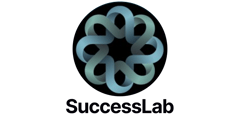Decoding Automation in SaaS: Rule-Based, Logic-Based, and AI-Based Systems Explained

Omid Razavi
December 19, 2024
Understanding the Evolution of Decision-Making Systems
Automation is the backbone of modern SaaS operations. It enables efficient workflows for everything from customer support to subscription management and marketing personalization. However, automation isn’t just about doing things faster—it’s about making smarter, scalable decisions that evolve with your business.
To build intelligent automation systems, SaaS companies have three primary tools at their disposal: rule-based systems, logic-based systems, and AI-based systems. Each offers unique advantages and trade-offs. But success lies in understanding when and how to deploy them—and how to address challenges like growing complexity, adaptability, and explainability.
While all three systems have merits, AI-based systems offer the most promise for the future. Their ability to adapt, learn, and improve over time uniquely suits them to handle the increasing complexity and dynamic nature of modern SaaS operations. According to McKinsey’s State of AI Report, businesses adopting AI-based systems see productivity improvements of up to 40% compared to those relying solely on static systems.
This article explores the merits and challenges of each approach, explains why AI-based systems stand out and offers insights for SaaS businesses looking to scale intelligently.
But first let’s break it down, using real-world examples to highlight the nuances of each system and its applications in SaaS.
1. Rule-Based Systems: The Foundation of Simplicity
What Are Rule-Based Systems?
Rule-based systems rely on static "if-then" or "when-then" statements to automate repetitive tasks. These systems handle specific scenarios defined explicitly by developers, making them predictable but inflexible.
Example in SaaS: Support Ticket Routing
A SaaS helpdesk platform might route tickets based on predefined conditions:
- If ticket type = "billing" AND customer tier = "VIP," route to Team A.
- If ticket response time > 2 hours, escalate to Manager.
Strengths of Rule-Based Systems:
- Simplicity: Easy to design, implement, and deploy for repetitive workflows.
- Predictability: Ensures consistent behavior for well-defined scenarios.
Weaknesses of Rule-Based Systems:
- Complexity Overload: Rule-based systems start simple, but as businesses grow, new rules are added for every edge case. Over time, this leads to a "rule explosion," making the system harder to manage and prone to errors.
- Inflexibility: Rules that worked well initially may become irrelevant or counterproductive under changing conditions, requiring constant manual intervention to update them.
2. Logic-Based Systems: Bridging Complexity with Structured Logic
What Are Logic-Based Systems?
Logic-based systems build on rule-based systems by incorporating advanced structures, such as decision trees, weighting, and prioritization. They excel in handling workflows with interdependent conditions but remain static and require human-defined logic.
Example in SaaS: Subscription Renewal Workflow
A subscription management platform might evaluate multiple factors to trigger engagement workflows:
- If customer is active for >6 months AND last engagement date is >30 days ago, send "We Miss You" email.
- If subscription renewal date <7 days, prioritize email delivery time.
Strengths of Logic-Based Systems:
- Advanced Handling: Suitable for complex workflows with multiple interrelated conditions.
- Transparency: Logic and workflows are easy to visualize and audit.
Weaknesses of Logic-Based Systems:
- Customization Fatigue: Like rule-based systems, logic-based systems start simple but grow in complexity as workflows expand. Maintaining and updating these systems for new scenarios becomes increasingly difficult.
- Static Nature: These systems lack adaptability. They require manual reprogramming for every new condition or business need.
Why It Makes Sense to Distinguish Rule-Based and Logic-Based Systems
Although they share some common traits, rule-based and logic-based systems differ in scope, complexity, and implementation. By distinguishing the two, SaaS businesses can align their automation strategies with their workflows' complexity and scalability needs.
3. AI-Based Systems: Adaptive and Predictive Intelligence
What Are AI-Based Systems?
AI-based systems use machine learning, natural language processing (NLP), and predictive analytics to adapt to new conditions and improve decision-making over time. Unlike static rule- or logic-based systems, AI learns from historical data and feedback to evolve dynamically.
Example in SaaS: Predictive Support Ticket Routing
AI-based systems dynamically route tickets based on customer sentiment, agent performance, and historical data:
- A ticket from a frustrated VIP customer with the subject "urgent refund" is assigned to a senior agent with a strong success rate in resolving refunds.
- The system identifies unresolved ticket patterns and suggests workflow optimizations.
Strengths of AI-Based Systems:
- Adaptability: Continuously evolves as it learns from data and user feedback.
- Scalability: Handles complex, high-volume workflows effortlessly.
- Proactivity: Predicts and prevents issues before they escalate.
Weaknesses of AI-Based Systems:
- Explainability: AI systems can act as a "black box," making it hard to understand why certain decisions are made. SaaS businesses must invest in explainable AI tools to build trust and ensure decisions can be validated and adjusted as needed.
- Implementation Complexity: Requires significant data, training, and monitoring to achieve high accuracy and reliability.
Comparison Table: Rule-Based vs. Logic-Based vs. AI-Based Systems

Why AI-Based Systems Hold the Most Promise
While rule- and logic-based systems have their merits, AI-based systems stand out for their ability to adapt, scale, and improve over time. Several factors highlight their potential:
- Dynamic Adaptation to Change AI-based systems excel in environments where conditions frequently change. For example, an AI model can adapt to evolving customer preferences, new product features, or unexpected market conditions.
- Handling Complexity at Scale As SaaS businesses grow, workflows become increasingly complex. Rule- and logic-based systems struggle to scale without significant human intervention. AI-based systems thrive in these scenarios by analyzing vast datasets and identifying patterns that static systems cannot.
- Proactive Decision-Making AI not only reacts to inputs but also anticipates future needs. For example, AI can predict customer churn risks and recommend personalized interventions, significantly improving retention rates.
- Continuous Learning and Improvement Unlike static systems, AI learns from its interactions and outcomes. For instance, an AI-driven support system can improve its ticket routing accuracy by analyzing resolution times and feedback from customers and agents.
- Cost Efficiency in the Long Run Although AI-based systems require a higher initial investment, they reduce operational costs over time by automating repetitive tasks, streamlining workflows, and improving productivity.
Conclusion: Designing the Future of SaaS with AI
Rule- and logic-based systems have been the backbone of SaaS automation for years, offering simplicity and reliability for static workflows. However, their limitations become apparent as businesses face growing complexity and dynamic conditions.
With their adaptability, scalability, and predictive capabilities, AI-based systems represent the future of SaaS automation. AI can help SaaS businesses stay competitive in an ever-changing landscape by learning from data and evolving continuously. While challenges like explainability and implementation complexity remain, the long-term benefits of AI—including increased agility, customer satisfaction, and cost efficiency—make it the most promising choice for modern SaaS companies.
Like
Comments (0)
Popular
Dive in
Related
Blog
Knowledge Graphs Matter for AI in Customer Service—And What Else You Need
Feb 18th, 2025 • Views 1
Blog
Knowledge Graphs Matter for AI in Customer Service—And What Else You Need
Feb 18th, 2025 • Views 1

